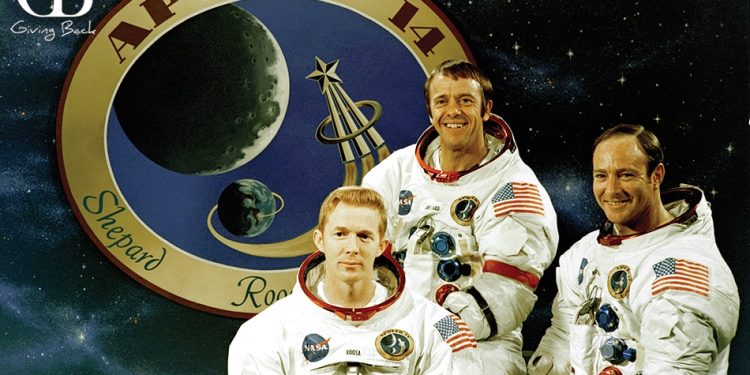Celebrating the 50th Anniversary of Apollo 14

In early 1971, NASA successfully landed men to the lunar surface for a third time, this time in a re-designed spacecraft that helped pave the way for a new era of scientific exploration.
On September 12, 1962, when John F. Kennedy challenged the American space program to put a man on the moon and bring him home safely by the end of the decade, the president was overlooking one small factor: NASA barely knew how to put a man in space, little yet how to send someone to the moon.
Rockets were not powerful enough. Space capsules were only designed for low Earth orbit. Mission Control was just learning how to communicate effectively with astronauts in space. Trajectories for how to get two spacecraft to fly near each other – and ultimately dock – had not been calculated. Spacesuits were in their infancy. Spacewalks, known as EVAs, were still four years in NASA’s future.
In essence, NASA was starting from scratch.
None of these things deterred NASA. President Kennedy had given them a goal, and they were determined to meet it.
In December 1968, Bill Anders, Frank Borman and Bill Anders traveled to the Moon, without landing, on Apollo 8. Then, in July 1969, America watched as NASA met President Kennedy’s goal, landing Neil Armstrong and Buzz Aldrin on the lunar surface on Apollo 11 as Michael Collins orbited overhead. Apollo 12 followed with a second Moon landing in November 1969.
NASA hit a hurdle in April 1970, when a near catastrophic explosion and fire crippled Apollo 13 on its way to the moon. But thanks to the quick thinking and actions of the crew – Fred Haise, Jim Lovell and Jack Swigert – and their experienced support teams in Mission Control, Apollo 13 safely returned to Earth.
In January 1971, just nine and half months later, astronauts Alan Shepard – who in 1961 had become America’s first man in space on Mercury “Freedom 7” – and Edgar Mitchell and Stuart Roosa, launched on top of a massive Saturn V rocket in newly re-designed and upgraded Command Service Module aboard Apollo 14. Their mission was one for the books. They landed closer to their designated landing site on the moon than any other Apollo mission before or since. Geologically, Shepard and Mitchell gathered almost 94 pounds of lunar samples from near the Cone Crater in the Fra Mauro highlands during two EVAs lasting nine hours and twenty minutes.
The success of Apollo 14 cannot be overstated. If it had failed, following the near tragedy on Apollo 13, the entire Apollo program may have been in jeopardy. Instead, Apollo 14 paved the way for a new era of scientific exploration of the lunar surface.
By Apollo 14, NASA had an all-star team in Mission Control. Gerry Griffin was a veteran Flight Director of several previous Apollo flights and was surrounded by other Flight Directors who also had taken part in multiple Apollo missions. Astronaut Fred Haise also had extensive experience in the program, having flown to the moon on Apollo 13 and having served on the back up crews for Apollos 8, 9 and 11. He volunteered to be a CAPCOM on Apollo 14 because he thought he might be of assistance due to his extensive knowledge of the mission after training for it on Apollo 13.
Both men recently joined the San Diego Air & Space Museum during a special video reunion for the 50th Anniversary of Apollo 14, where they shared unique insights and never-before-told stories about the mission as well other facets of the American space program.
The two-part video reunion can be viewed at:





